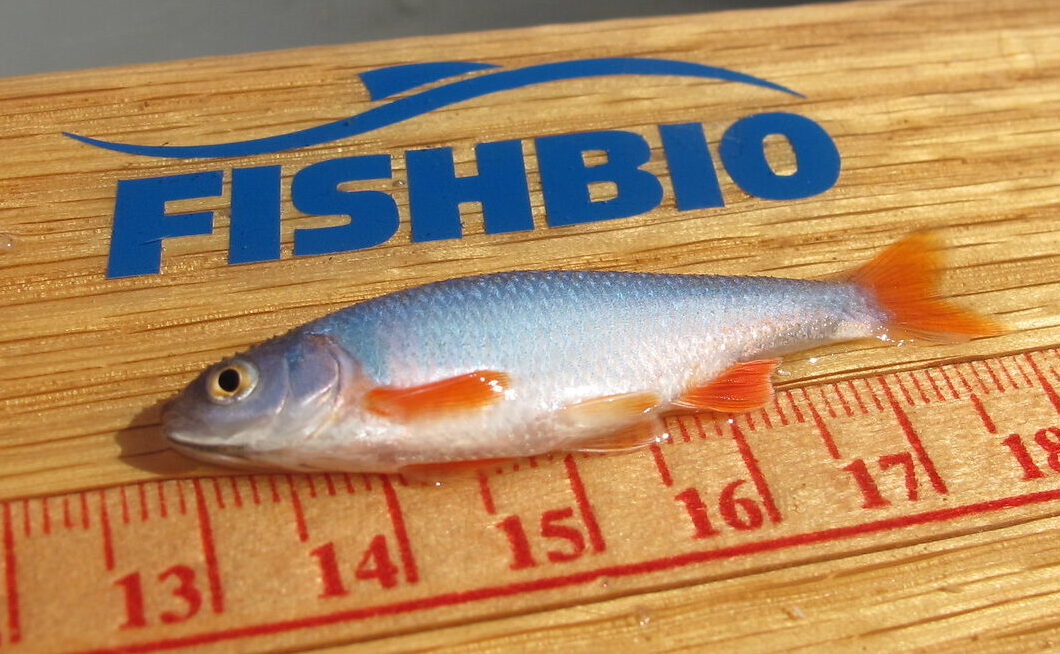Friday September 5, 2025

Common names: Red Shiner
Scientific name: Cyprinella lutrensis
Native range: Central United States in the Mississippi River Basin
Status: Least Concern
Habitat: A habitat generalist
A member of the family Cyprinidae, the red shiner is originally native to regions in the central United States along the Mississippi River basin. Outside of its native range, the red shiner has been introduced widely throughout the continental United States. Adults are relatively small fish that range from 4.5 to 9 cm in total length, and are known for their red anal, caudal, and pectoral fins, and grey dorsal fins. The body of this fish ranges from a shiny blue-green on the dorsal surface to a white underside, and a dark dorsal stripe runs down the length of its back. Red shiners are known to thrive in a variety of habitats, including harsh ones known for having poor water quality. Often introduced intentionally by humans into water bodies outside their native range, the red shiner’s generalist nature has proven highly successful and often results in invasions. Red shiners are sexually mature at 1 to 2 years and spawning occurs from spring to fall. Gravid females (which are pregnant, or carrying eggs) have been reported to lay 485 to 684 eggs and lay 5 to 19 clutches of eggs per season. The diet of this species includes plant leaves, terrestrial and aquatic insects, and algae.
Fun Fact: While the red shiner is considered invasive in many areas, its subspecies Cyprinella lutrensis blairi, previously known to occur in Texas, went extinct in the 1950s because of competition from non-native species.
